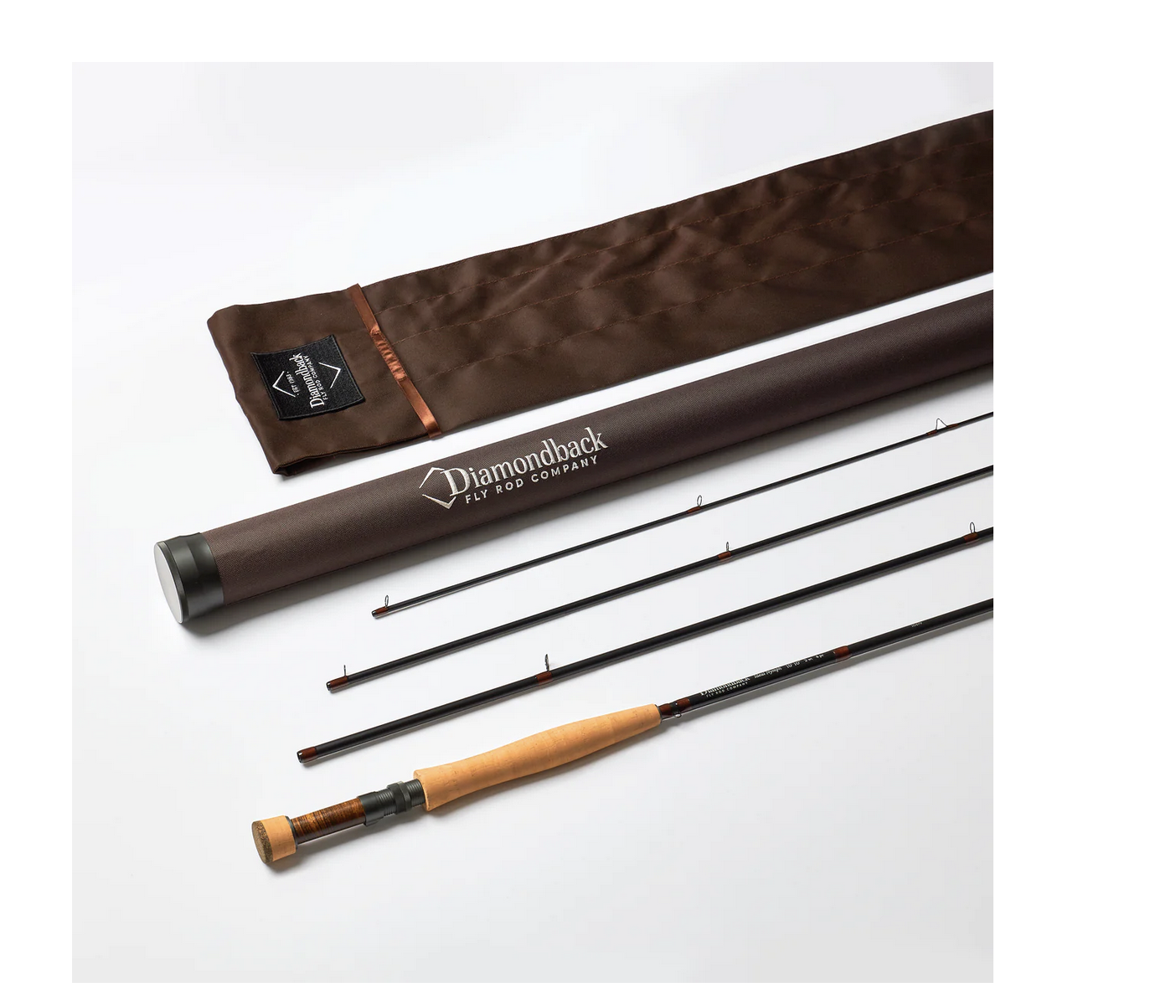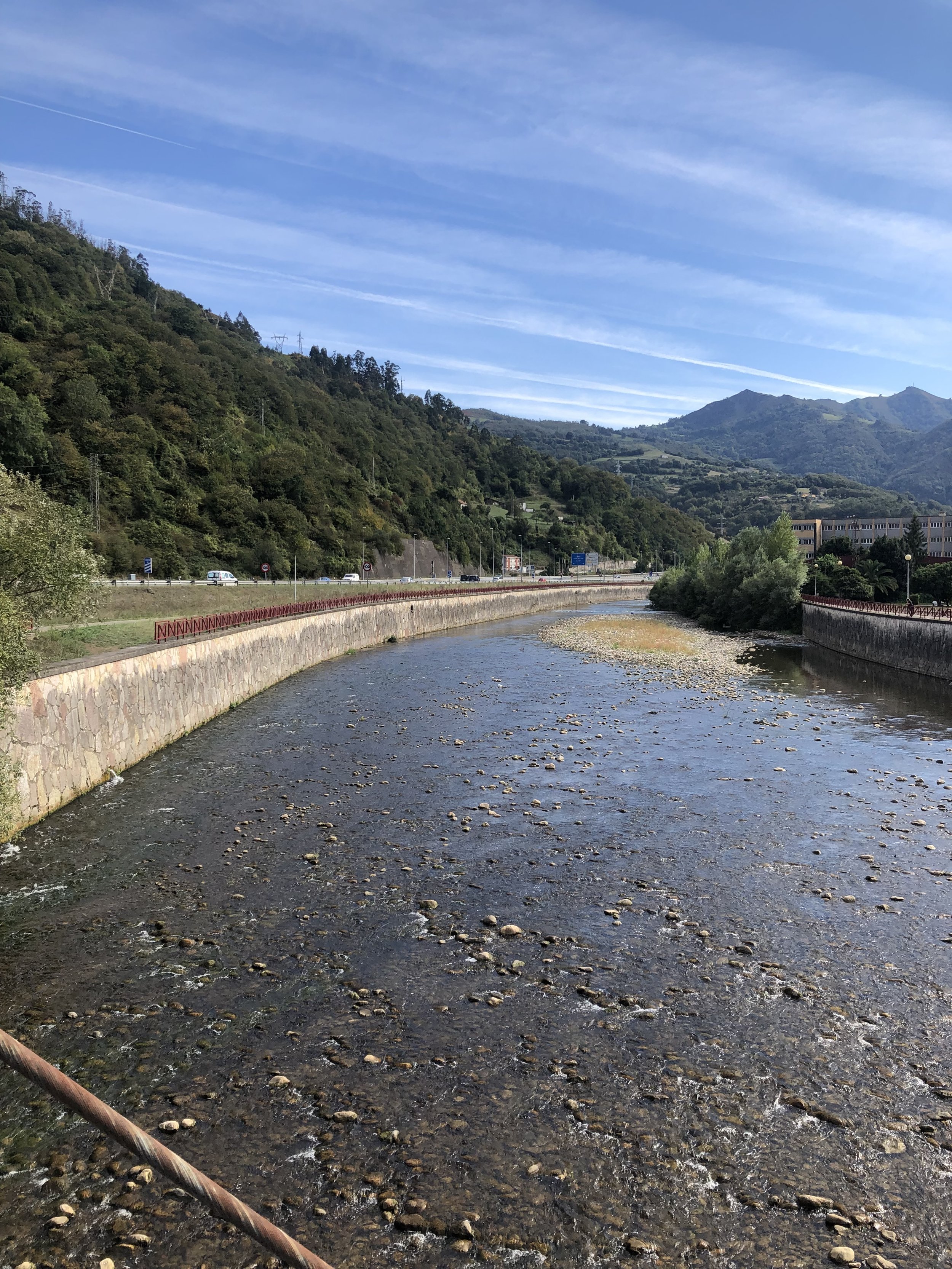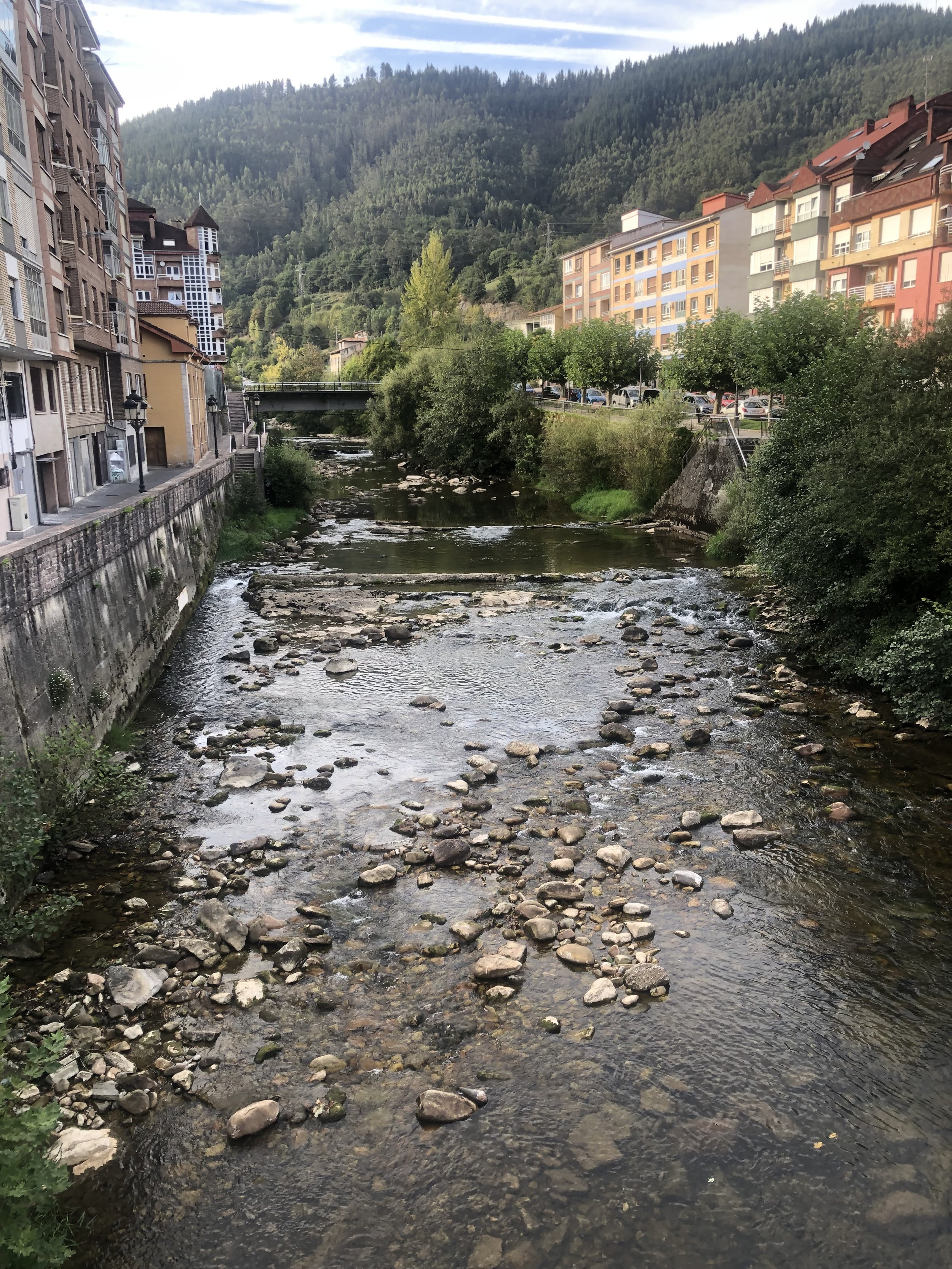Unlocking the Benefits of Nymphing: The Case for Fishing with Less Weight
Jack Arnot:
In the evolution of my angling pursuits, particularly in the recent years, a discernible shift has occurred in my approach to river fishing—I have consciously and gradually reduced the amount of weight I employ while nymphing. This counterintuitive strategy stands in contrast to the prevailing trend where many anglers opt for heavier weights, essentially turning their tackle into depth charges. My experience has led me to believe that, in numerous scenarios, adopting a lighter weight strategy proves to be advantageous on various fronts.
One of the primary benefits of employing less weight in fishing scenarios lies in the potential to minimize the disturbance caused to underneath the water. The subtle approach afforded by lighter weights like 2.0mm, 2.3mm and even brass beads reduces the likelihood of spooking fish, allowing for a more stealthy and less intrusive presence on the river. This approach is particularly crucial in scenarios where the fish are known to be easily startled or in areas where finesse is required for successful angling.
Furthermore, the decision to fish with less weight grants anglers the ability to work down the water column with greater precision. Unlike the conventional practice of hefting heavy nymphs to the riverbed, adopting a lighter approach allows for a more controlled descent through the water, enabling a more thorough exploration of different depths and currents. This nuanced control over the presentation of fly can be instrumental for selective fish that may be wary of more intrusive techniques.
THE APPROACH : Fine Tuning
Fly design
Embarking on a journey toward a lighter practice in river fishing demands understanding of tackle, particularly the flies in one's box. Achieving finesse in angling involves recognizing the distinctive characteristics of each fly, such as the contrasting sinking behavior between a 2.5mm tungsten bead perdigon and a 2.5mm tungsten hare's ear adorned with a CDC or partridge collar. The subtle nuances extend further to the difference in drift patterns between a 2.0mm and a 4.0mm nymph, where the delicate descent of the former contrasts starkly with the more substantial presence of the latter, like a 4.0mm mop. This granularity in fly selection contributes to a more tailored approach, adapting to the specific conditions and preferences of the fish.
After picking the right fly based on its characteristics, I usually classify this as buggy and non buggy. The next step would be sizing. Not all of the lighter flies I frequently fish have to be small. Most times than not in the summer I pick larger flies 16-14 just because I can get away with it and I will use the same size beads I use on my smaller bugs. Mainly these are 2.0mm-3.0mm. Any other time of the year in Colorado I tend to fish 18’s with either oversized beads or 20’s with oversized beads. This still allows me to get small flies down in the zone with less weight than a standard size 16-12 patterns.
One notable insight from my river experiences is the apparent ability of fish to discern between nymphs hurtling down at mock speed and those gracefully descending in the current. This perception in my opinion underscores the importance of embracing a more refined approach, where the weight and characteristics of the fly harmonize to replicate the natural drift of aquatic insects. By incorporating lighter weights and diversifying fly patterns, anglers can offer a convincing and natural presentation, increasing the likelihood of enticing wary fish. This tactical shift not only enhances the chances of success but also adds an extra layer of challenge and satisfaction to the angling experience, emphasizing that finesse in fly selection can be the key to unlocking the mysteries of a watershed. When fishing at the 2023 World Fly Fishing Championships in Slovakia earlier this year the graying we were targeting ate incredibly fast and soft with almost no reaction from the sighter whatsoever. By being able to down size the weight of my flies like some of my other teammates, we were able to have more heightened sensitivity on our nymph rigs are soon strikes became pretty obvious with less weight inhibiting our hook-set capabilities.
Tippet Size
Once you've selected the fly, the next crucial element to consider is the often-overlooked factor of tippet size. This aspect, in fact, holds the potential to outweigh the impact of fly design on any given day. Tippet size emerges as a paramount determinant in controlling the speed at which your fly reaches the strike zone, thereby influencing the success of your angling endeavors. In my own fishing experiences, particularly in the diverse waters of Colorado, the choice of tippet size has played a pivotal role in shaping my approach to both dry and nymph fishing.
For a considerable duration, I've leaned towards the finesse of 7x tippet in many of my Colorado fishing excursions. Yet, this preference stands in stark contrast to my practices in other out-of-state locations, where the thought of using 7x would be inconceivable. The significance of tippet size cannot be overstated, as it directly impacts your ability to manipulate the fly during a drift. Opting for heavier tippets inherently diminishes your capacity to finesse the fly's movement, compelling a more straightforward presentation. Acknowledging this aspect becomes important, as it prompts anglers to tailor their tippet choices according to the unique conditions of each fishing locale, highlighting the dynamic nature a run, seam, or pocket.
HOW TO NYMPH LIGHT BUGS: Casting, rods, and leaders
Anglers often avoid using light flies due to challenges in effectively presenting them in the strike zone. Achieving success with these delicate patterns requires a careful consideration of key factors. First and foremost, selecting an appropriate tippet size is crucial, as it influences the fly's sinking behavior and ensures consistent depth. Balancing the tippet size allows anglers to reach the strike zone without encountering issues like dragging or unnatural floating.
Casting proficiency is equally important in the pursuit of light fly success. Skillful nymphing techniques enable precise presentations and maintain control over the drift, particularly in challenging conditions such as strong currents. Anglers must refine their casting skills to accurately place the fly in the target area, enhancing the chances of enticing strikes.
Strategic fishing location choices complete the trifecta of success with light flies. Observing current behavior and understanding riverbed topography are essential for positioning oneself in the optimal sweet spot. Whether dealing with a boiling current or complex water structures, anglers must adapt their location to ensure that their light flies consistently reach and maintain the strike zone, increasing their overall success with these challenging yet rewarding patterns.
Casting/Rods
Starting with the cast you will need to find a rod that works best for you. I tend to do my fishing with Diamondback Rod 10' 3wt and Diamondback Rod 10' 10" 2wt. One of the main reasons I like these models is that they are stiff enough to control smaller flies and especially the 10’ 10” model adding lots of additional reach. I cast these flies two different ways either single nymphing very shallow riffles and pocket water or double nymphing larger flats and runs. Starting to double nymph with light flies is easier to start with just because it offers a little more control and weight to the rig.
When targeting fish with lighter flies, one productive approach involves floating the sighter with a small single nymph, be it brass or 2.0mm. Although mastering this technique demands continuous refinement, its effectiveness in reaching the strike zone without introducing slack into the cast makes it worth the effort. Initiating with a longer cast and maintaining proper shoulder alignment upstream are critical steps. Guiding clients during summer, I emphasize the significance of shoulder direction in dictating fly path, a detail often overlooked by many anglers.
To execute this technique successfully, a water load cast from downstream is followed by a tuck cast, wherein the rod is stopped high, allowing the fly to dive down vertically. When executed correctly, this combination of a long cast and strategic casting maneuvers permits anglers to effectively explore deep runs. It's a nuanced way to avoid introducing slack into the cast, a common challenge when dealing with lighter flies. Being mindful of the amount of drag and strategically slowing down the drift can further enhance the success of this method.
Another fruitful strategy for fishing with light flies involves utilizing double nymph rigs. A preferred combination for me is the double 2.0mm with subtle patterns like a PT or a Waltz variation. This method proves to be versatile, efficiently covering a substantial amount of water. Drawing inspiration from our guide Pablo during the 2022 World Championship in Spain, where we targeted picky and spooky brown trout in low water and some larger river venues, lateral nymphing emerged as a powerful technique. Casting the flies across the river at 12 o'clock and keeping them high in the water column, almost feeding them downstream, allows for swift coverage. While the flies may not be in close proximity to the riverbed, this approach proved effective in enticing eats from discerning fish in super low water conditions. Adapting the casting style to increase speed and then deliberately slowing down the sighter, allowing the flies to fall underneath for the remainder of the drift, has become my preferred style, especially in areas with frequently encountered fish in extremely low water. This technique enables me to discern and capitalize on feeding opportunities in waters often overlooked by other anglers.
Leaders
Selecting the right leader is paramount when fishing lighter flies, ensuring a seamless transfer of power throughout the leader. My preference leans towards small level leaders constructed with Maxima Chameleon or fluorocarbon in the 3-4lb range. Opting for leaders under 8lb minimizes resistance, preventing the leader from pulling flies downstream too quickly. This choice facilitates a more delicate presentation, crucial when working with lighter flies that can be easily affected by the leader's behavior.
In the realm of euro nymphing, there's a common tendency among beginners to overweight their bugs, primarily to ease casting. While using heavier flies might make casting more manageable, it significantly limits the range and versatility of where one can effectively fish. For instance, casting a single 4.0mm or 3.5mm fly on a leader ranging from 2lb to 20lb is feasible. However, attaching a 2.0mm or 2.3mm fly to a 20lb butt section on a euro leader could result in the fly being dragged downstream at a rapid pace due to the sag of the leader.
This underscores the importance of preferring lighter level leaders without sag, enabling anglers to manipulate the fly effectively, especially at greater distances, a necessity in many euro nymphing scenarios. It's rarely sufficient to merely plop a single 2.0mm or lighter fly right in front of you and expect it to sink and catch fish. Often, success demands longer casts at extended distances to elongate the drift, allowing for a more natural presentation and increasing the chances of bringing strikes over more water.
Formulas:
Level Leader - Camo Leader Material 15ft 6lb to a Cortland Tippet ring 2mm
Level Leader - Cortland 5x Fluro 16ft to a Cortland Tippet ring 2mm
Level Leader- Tri Color Sighter 14ft (6.3lb) to 1.5ft of Cortland 5x Fluro with a Cortland Tippet ring 2mm
Here is what Cortland has to say. “Euro Nymph Leader material is a camouflage colored nylon featuring a super-slick finish. A perfect blend between stiffness and suppleness allows you to deliver heavy tungsten fly patterns with ease yet the line remains memory free in your hands. Perfect for building Nymph rigs and tapering your own dry fly or dry dropper leaders.”
-50 yards
WATER TYPES
One of the critical aspects I'd like to delve into is the role of water types in fly fishing. Amidst my discourse on light flies, I realize I haven't thoroughly explained the specific scenarios in which I find them particularly effective. Weight downsizing is a strategy I frequently employ, especially in locations experiencing fishing pressure or areas where I believe fish are averse to nymphs plunging directly in front of them. I firmly believe that the ability to fish with lighter flies can open up numerous overlooked spots, as many anglers tend to focus on water deeper than ankle-deep waters or shallower.
Observing the behavior of fish during different seasons is essential. In the summertime, particularly on Colorado's local tailwaters and freestones, I've noticed that as fishing pressure intensifies, fish tend to move into extremely shallow areas during the mornings and evenings. On guide trips, I often instruct clients to make a few casts while still standing on the bank, and more often than not, we find success before even touching the water. These areas, which may only be ankle-deep at their deepest, are surprisingly abundant with fish and are frequently overlooked by anglers fixated on the more prominent "A" water structures.
However, even in areas with deeper water, lighter flies can prove effective. I tend to target knee to calf-deep slots and depressions, where I can allow my fly ample time to sink. In these deeper transition zones, I usually execute a couple of drifts, ensuring that my fly covers the top layers of the water column before gradually probing the depths. This approach has proven successful in enticing fish that may not be as easily tempted by traditional, heavier nymphing tactics. By fine-tuning the weight and presentation of my flies, I've found consistent success in a variety of water types, uncovering the potential of overlooked fishing runs.
One crucial point I'd like to emphasize for the reader is that these techniques are just another tool in any angler's toolkit. Personally, I often practice these methods because in competitions, I am constantly seeking an edge. Even if you don't participate in competitions, consider embracing these approaches as an additional means to land a couple of extra fish on your next outing!
Caudal River, Spain. ( lots of nice shallow pocket water for a single nymoh or dry)
Hron River, Slovakia. ( Pictured here is Devin Olsen combing through some prime shallow grayling water)
River in Spain (this section did not have much for fish numbers, and required a very light presentation)
Narcea River, Spain ( our practice venue for this river where we found lots of fish in very shallow water on both dry and nymph)







